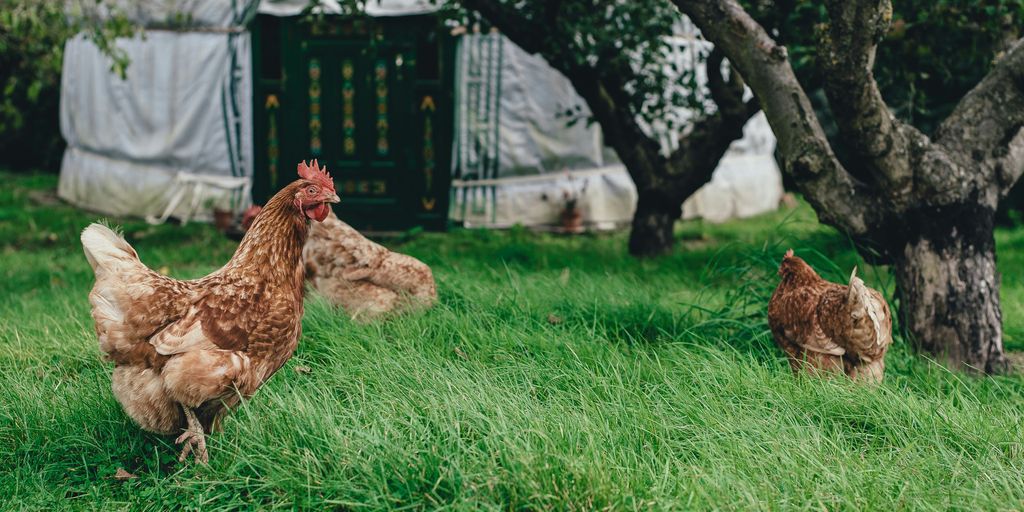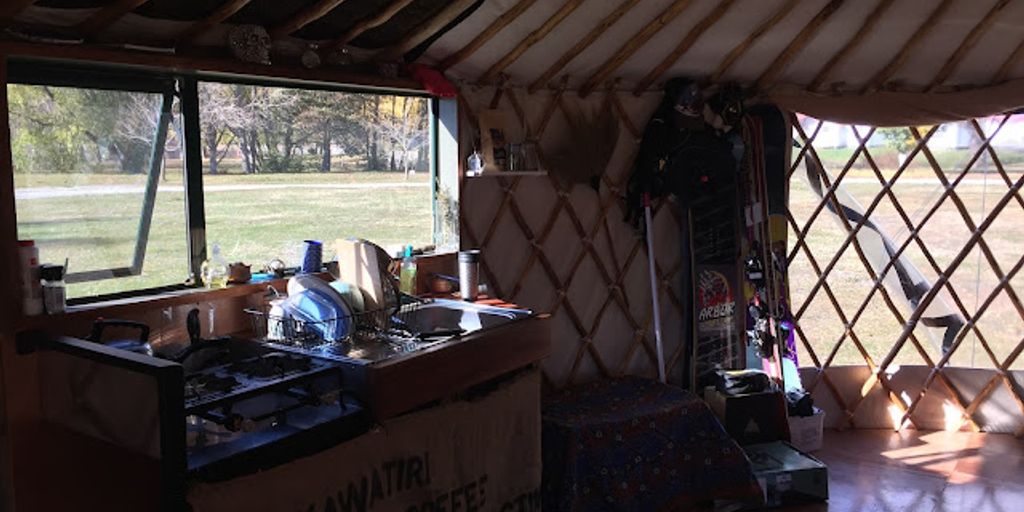Exploring the Difference Between Yurt and Tepee: A Comparative Guide
Yurts and tepees are two of the most iconic and historic types of portable homes. Both have been used for centuries by different cultures and have unique designs and purposes. This guide will help you understand the differences between these two fascinating structures.
Key Takeaways
- Yurts originated from Central Asia, while tepees are from Native American cultures.
- Yurts have a circular shape with a wooden frame, whereas tepees are conical and made with wooden poles and animal hides.
- Yurts offer better insulation and temperature control compared to tepees.
- Tepees are easier to set up and take down, making them more portable.
- Modern adaptations of both yurts and tepees are being used for eco-friendly and sustainable living.
Historical Origins and Cultural Significance
Ancient Beginnings of Yurts
Yurts have a long history, dating back thousands of years. These ingenious structures were first used by nomadic tribes in Central Asia. They were designed to be easily assembled and disassembled, making them perfect for a nomadic lifestyle. The yurt’s circular shape and sturdy framework provided excellent protection against harsh weather conditions.
Tepees in Native American Culture
Tepees, on the other hand, are deeply rooted in Native American culture. These cone-shaped tents were primarily used by the Plains Indians. The design of the tepee allowed it to be quickly set up and taken down, which was essential for tribes that followed buffalo herds. The tepee’s structure also made it highly resistant to strong winds.
Symbolism and Traditions
Both yurts and tepees hold significant cultural symbolism. Yurts are often seen as a symbol of unity and community, reflecting the close-knit nature of nomadic tribes. Tepees, meanwhile, are often decorated with symbols and paintings that tell stories or represent spiritual beliefs. These decorations were not just for show; they held deep meaning for the people who lived in them.
From the towering yurts of Central Asia to the iconic tepees of Native American tribes, ancient innovations showcase our ancestors’ ingenuity in adapting to their environments.
Structural Design and Materials

Framework and Construction of Yurts
Dreaming of a unique home? Consider how to build a yurt. These circular structures, inspired by traditional nomadic dwellings, offer a compelling mix of charm and functionality. The framework of a yurt is typically made from wood, creating a lattice wall that supports the roof. The roof itself is often a wooden frame covered with felt or canvas. The design is both simple and sturdy, allowing it to withstand various weather conditions.
Materials Used in Tepees
Tepees, on the other hand, are traditionally made using wooden poles and animal hides. The poles are arranged in a cone shape, and the hides are stretched over them to create a cover. In modern times, canvas is often used instead of hides. This structure is not only lightweight but also easy to assemble and disassemble, making it perfect for a nomadic lifestyle.
Durability and Weather Resistance
When it comes to durability, both yurts and tepees have their strengths. Yurts are known for their ability to withstand harsh weather, thanks to their sturdy wooden framework and insulated coverings. Tepees, while not as robust, are designed to be easily repaired and can be quickly taken down in case of severe weather. Both structures offer a unique blend of durability and portability, making them ideal for different living situations.
The tension and compression of space give form or coherence to these structures, making them both functional and aesthetically pleasing.
Living Experience and Comfort
Interior Layout of Yurts
When it comes to the interior layout of yurts, they are quite spacious and open. The circular design allows for a lot of flexibility in arranging furniture and other items. You can easily fit a bed, a small kitchen, and even a sitting area inside. The central support column, often found in traditional yurts, can be used to hang lights or decorations, adding a cosy touch to the living space.
Space and Ventilation in Tepees
Tepees, on the other hand, have a more conical shape, which can make the interior feel a bit more cramped compared to yurts. However, they are designed with excellent ventilation in mind. The smoke hole at the top allows for air to circulate, making it easier to maintain a comfortable temperature inside. This feature is particularly useful when you have a fire going inside the tepee.
Insulation and Temperature Control
One of the key differences between yurts and tepees is their insulation. Yurts are typically better insulated, thanks to their thick felt or canvas walls. This makes them more suitable for colder climates. Tepees, while not as well-insulated, are designed to be easily adjustable. You can raise or lower the sides to control the airflow and temperature inside. This makes tepees more adaptable to different weather conditions.
Living in a yurt or a tepee offers a unique experience that combines comfort with a touch of adventure. Whether you prefer the spaciousness of a yurt or the excellent ventilation of a tepee, both options provide a cosy and memorable living experience.
Mobility and Portability
Ease of Assembly and Disassembly
When it comes to setting up and taking down, both yurts and tepees have their own unique advantages. Yurts are known for their intricate framework, which can be a bit tricky to assemble at first. However, once you get the hang of it, the process becomes much smoother. On the other hand, tepees are designed for quick assembly and disassembly, making them ideal for those who need to move frequently.
Transporting Yurts
Transporting a yurt can be a bit of a challenge due to its size and weight. The framework and materials can be bulky, requiring a larger vehicle for transport. However, the durability and long-term living benefits often outweigh the inconvenience. If you’re planning to stay in one place for an extended period, a yurt might be the better option.
Tepees on the Move
Tepees are incredibly portable and can be easily packed up and moved to a new location. Their lightweight design and simple structure make them perfect for those who are always on the go. Whether you’re moving to a new campsite or just want to change your view, a tepee offers the flexibility you need.
In summary, tepees excel in short-term camping and outdoor activities, while yurts are better suited for long-term living and durability.
Modern Adaptations and Uses
Yurts in Contemporary Living
Yurts have come a long way from their ancient origins. Today, they are often used as eco-friendly homes or vacation getaways. Modern adaptations can include insulation upgrades, additional windows, house wrap (for humid areas), and solar panels, making gers suitable for year-round living. Some people even use them as studios or guest houses.
Tepees in Modern Recreational Use
Tepees are not just historical structures; they are also popular in modern recreational use. Many campsites and festivals offer tepees as a unique lodging option. They provide a cosy and authentic experience, often enhanced with modern comforts like electric lighting and heating.
Eco-Friendly and Sustainable Options
Both yurts and tepees are celebrated for their low environmental impact. They require fewer materials to build and can be easily dismantled and moved, making them ideal for sustainable living. Modern designs often incorporate renewable energy sources and sustainable materials, aligning with today’s eco-conscious lifestyle.
Living in a yurt or tepee can be a unique way to embrace a simpler, more sustainable lifestyle while still enjoying modern comforts.
Cost and Accessibility
Price Range and Affordability
When it comes to yurts and tepees, the price range can vary quite a bit. Yurts tend to be more expensive due to their complex structure and materials. On the other hand, tepees are generally more affordable, making them a popular choice for those on a budget. If you’re looking for a luxury glamping experience, you might find a cosy tipi in a tranquil setting, perfect for a romantic getaway.
Availability of Materials
The materials needed for both yurts and tepees are usually easy to find. Yurts often require specialised materials like wooden frames and felt insulation, which can be a bit pricey. Tepees, however, use more common materials like canvas and wooden poles, making them easier to source and often cheaper.
DIY vs. Pre-made Options
If you’re handy, you might consider building your own yurt or tepee. DIY kits are available for both, but they come with their own set of challenges. Pre-made options are more convenient but can be more expensive. It’s a trade-off between time, effort, and cost.
Building your own yurt or tepee can be a rewarding experience, but it’s important to weigh the pros and cons before diving in.
Here’s a quick comparison table to help you decide:
| Aspect | Yurt | Tepee |
|---|---|---|
| Price Range | Higher | Lower |
| Material Availability | Specialised | Common |
| DIY Difficulty | Moderate to High | Low to Moderate |
| Pre-made Cost | Higher | Lower |
In summary, whether you choose a yurt or a tepee, there are options to fit various budgets and skill levels. Happy camping!
Exploring the cost and accessibility of yurts is essential for anyone considering this unique living option. Yurts can be an affordable alternative to traditional housing, but prices can vary based on size and materials. Accessibility is another key factor, as some locations may have restrictions or require special permits. To learn more about how you can make a yurt your home, visit our website and discover all the details.
Conclusion
In summary, both yurts and tepees offer unique and enriching experiences for those looking to connect with nature. Yurts, with their round shape and sturdy build, provide a cosy and spacious retreat, perfect for families or groups. On the other hand, tepees, with their iconic conical design, offer a more traditional and minimalist camping experience. Each has its own charm and practical uses, making them suitable for different types of adventures. Whether you choose the comfort of a yurt or the simplicity of a tepee, both promise memorable moments under the stars. Happy camping!
Frequently Asked Questions
What is the main difference between a yurt and a tepee?
Yurts are round, tent-like structures traditionally used by nomadic people in Central Asia. They have a wooden frame covered with felt or fabric. Tepees, on the other hand, are cone-shaped tents used by Native American tribes. They have a frame of wooden poles covered with animal hides or canvas.
Which is easier to set up, a yurt or a tepee?
Tepees are generally easier and quicker to set up and take down compared to yurts. This makes them more suitable for people who move frequently.
Are yurts and tepees suitable for all weather conditions?
Yurts are known for their durability and excellent insulation, making them suitable for various weather conditions, including harsh winters. Tepees are also durable but may require additional insulation for extreme weather.
Can I live in a yurt or a tepee year-round?
Yes, many people live in yurts year-round due to their sturdy construction and good insulation. Tepees can also be lived in year-round, but they may need extra insulation and maintenance in extreme weather conditions.
What materials are used to build yurts and tepees?
Yurts are typically made from a wooden frame covered with felt or fabric. Tepees are constructed using wooden poles and are covered with animal hides or canvas.
Are yurts and tepees eco-friendly?
Yes, both yurts and tepees are considered eco-friendly options. They use natural materials and have a minimal impact on the environment, making them sustainable living choices.





